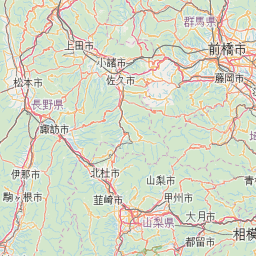びびなび
ルート検索
住所を入力して検索ボタンをクリックすると、ルートが表示されます。
| 出発地の住所 | |
|---|---|
| ルートタイプ | |






登録内容
- 登録者 : 渋谷区
- [言語]日本語
- 登録日 : 2023/09/15
- 掲載日 : 2023/09/15
- 変更日 :2023/09/15
- 総閲覧数 : 1187 人
杉本博司 本歌取り 東下り
杉本博司(1948~)は、和歌の伝統技法「本歌取り」を日本文化の本質的営みと捉え自身の作品制作に援用し、2022年に姫路市立美術館でこのコンセプトのもとに「本歌取り」展として作品を集結させました。
杉本博司(1948~)は、和歌の伝統技法「本歌取り」を日本文化の本質的営みと捉え自身の作品制作に援用し、2022年に姫路市立美術館でこのコンセプトのもとに「本歌取り」展として作品を集結させました。
本歌取りとは、本来、和歌の作成技法のひとつで、有名な古歌(本歌)の一部を意識的に自作に取り入れ、そのうえに新たな時代精神やオリジナリティを加味して歌を作る手法のことです。作者は本歌と向き合い、理解を深めたうえで、本歌取りの決まりごとの中で本歌と比肩する、あるいはそれを超える歌を作ることが求められます。西国の姫路で始まった杉本の本歌取り展は、今回、東国である東京の地で新たな展開を迎えることから、「本歌取り 東下り」と題されました。本展を象徴する作品である《富士山図屏風》は、東国への旅中に、旅人が目にする雄大な富士山を描いた葛飾北斎の《冨嶽三十六景 凱風快晴》を本歌とした新作で、本展で初公開となります。またこの他にも、書における臨書を基に、写真暗室内で印画紙の上に現像液又は定着液に浸した筆で書いた《Brush Impression》シリーズなど、本展は新作を中心に構成される一方、中国宋時代の画家である牧谿の水墨画技法を本歌取りとした《カリフォルニア・コンドル》など、杉本の本歌取りの代表的作品も併せて展示します。さらに、室町時代に描かれたと考えられる《法師物語絵巻》より「死に薬」を狂言「附子」の本歌と捉え、その他の8つの物語と共に一挙公開致します。
現代の作品が古典作品と同調と交錯を繰り返し、写真にとどまらず、書、工芸、建築、芸能をも包み込む杉本の世界とその進化の過程をご覧ください。
- [お問い合わせ先]
- https://shoto-museum.jp/exhibitions/201sugimoto/
| 会場 | |
|---|---|
| 住所 | 渋谷区 |
| 日程 | 2023年9月15日~2023年11月11日 |
| 時間 | |
| 時間詳細 | |
| アクセス | |
| 会場詳細 |
びびなび - イベント情報
印刷された情報をサイトで見るには、上記URLまたはQRコードからアクセスできます。